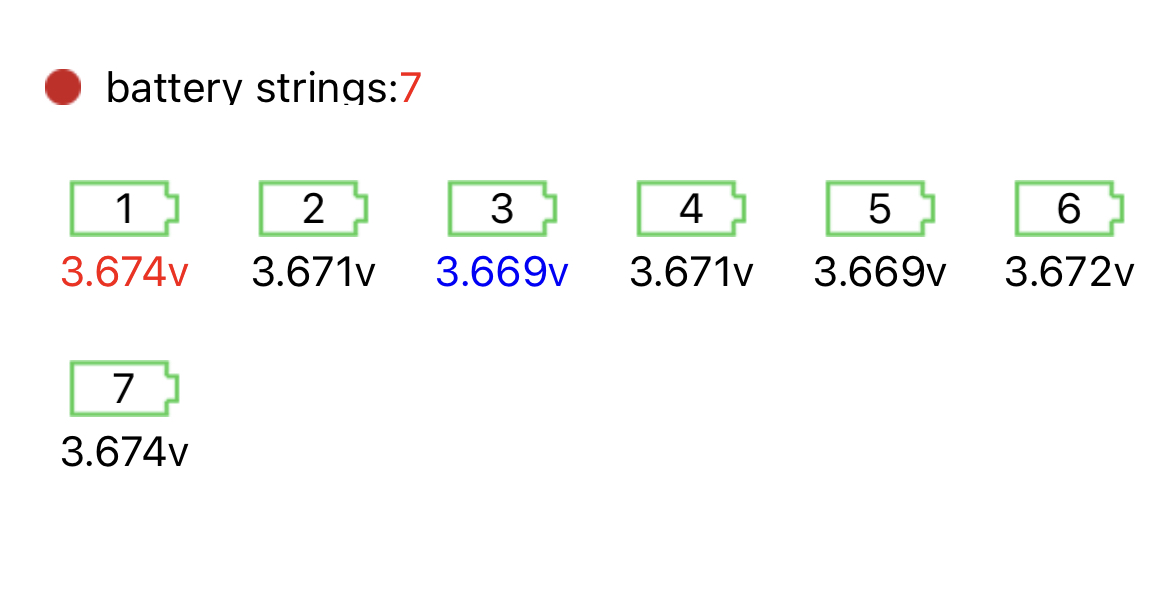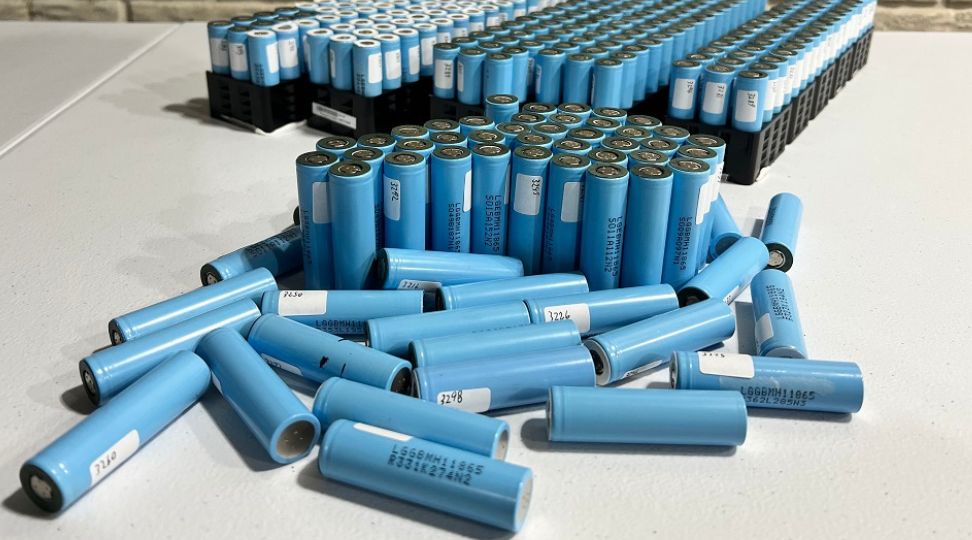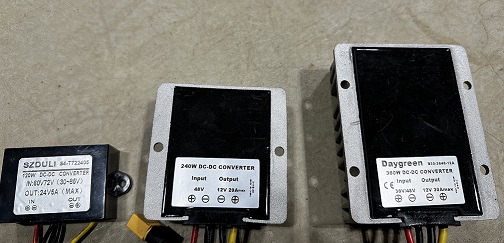
How To Balance A Lithium Batteries and Cells
Table of Contents
It's important to know how to balance a lithium battery pack. Building a lithium-ion battery pack is an exciting and fulfilling process. In fact, it's so exciting that you just may overlook some critical steps.
If you built a lithium-ion battery and its capacity is not what you expect, then you more than likely have a balance issue. While it's true that cells connected in parallel will find their own natural balance, the same is not true for cells wired in series.
Battery cells in series have no way of transferring energy between one another. So if your cell groups are not perfectly balanced, the BMS will cut your battery off long before your battery pack is actually out of energy.
What Is Lithium-Ion Cell Balancing?
Cell balancing is the act of making sure all cells in a battery are at the same voltage. When building a lithium-ion battery, the process involves connecting many cells together to form a singular power source. In ideal circumstances, brand-new cells will all be at the same voltage level.
This, however, is not always the case. Also, not everyone is going to be building their first lithium-ion battery with brand-new cells. So, it's important to have some sort of method for balancing the cell groups in a lithium-ion battery pack. Remember, your lithium-ion battery is only as strong as its weakest link.
So, even if just one single cell group has a lower voltage than the rest of the pack, the battery will cut off when that cell group reaches the cut-off point.
How To Balance Lithium Batteries
There are several ways this can be achieved. Batteries can be top-balanced or bottom-balanced. They can be actively balanced or passively balanced. The quickest way to balance cells is by burning off the excess energy.
For example, if all of your cell groups but one are at 4.05 volts and the high cell group is at 4.2 volts, it will be much quicker to place a load on the high cell group and bring it down to 4.05 volts.
Now let's flip it around. If all of your cell groups other than one group are at 4.2 volts and one group is at 4.05 volts, it will take much longer to bring the low group up as opposed to bringing a high group down.
This is because a charger cannot charge a battery at high speed when the voltage of the cell and the target charge voltage are very close. This is because the voltage difference is what allows current to flow. So, as the voltage of the cell group gets closer and closer to the charger's target voltage, it will charge slower and slower.
You can also place a li-ion balancer in your pack to perform active cell balancing, increasing the lifetime of your battery pack. When you wire an active balancer in your pack, you want to make sure that the balancer matches the series groups that you have in your pack. For instance, if you are creating a 4S battery pack, you want to make sure that the balancer you put in is set up for 4S battery packs.
Here is a list of lithium-ion balancers for common series groups: (also with most of these they can do from 2S all the way up to their max number of series groups)
- 3 series packs
[[ aff type=aff ~ link=https://amzn.to/3gqlSW3 ~ title=`1.2A 3S Active Li-Ion Balancer` ~ image=https://admin.cellsaviors.com/storage/3s-balancer.jpg ~ description=`Active 3-series balancer for li-ion cells & lifepo4 cells.` ~ height=small ~ buttonText=`Check price` ]]
- 4 series packs
[[ aff type=aff ~ link=https://amzn.to/3CVDocG ~ title=`1.2A 4S Active Li-Ion Balancer` ~ image=https://admin.cellsaviors.com/storage/4s-balancer.jpg ~ description=`Active 4-series balancer for li-ion cells & lifepo4 cells.` ~ height=small ~ buttonText=`Check price` ]]
- 7 series packs
[[ aff type=aff ~ link=https://amzn.to/3gd35NU ~ title=`1.2A 7S Active Li-Ion Balancer` ~ image=https://admin.cellsaviors.com/storage/7s-balancer.jpg ~ description=`Active 7-series balancer for li-ion cells & lifepo4 cells.` ~ height=small ~ buttonText=`Check price` ]]
- 10 series packs
[[ aff type=aff ~ link=https://amzn.to/3gnRnjM ~ title=`1.2A 10S Active Li-Ion Balancer` ~ image=https://admin.cellsaviors.com/storage/10s-balancer.jpg ~ description=`Active 10-series balancer for li-ion cells & lifepo4 cells.` ~ height=small ~ buttonText=`Check price` ]]
- 12 series packs
[[ aff type=aff ~ link=https://amzn.to/3gnRnjM ~ title=`1.2A 12S Active Li-Ion Balancer` ~ image=https://admin.cellsaviors.com/storage/12s-balancer.jpg ~ description=`Active 12-series balancer for li-ion cells & lifepo4 cells.` ~ height=small ~ buttonText=`Check price` ]]
- 13 series packs
[[ aff type=aff ~ link=https://amzn.to/3gnRnjM ~ title=`1.2A 13S Active Li-Ion Balancer` ~ image=https://admin.cellsaviors.com/storage/13s-balancer.jpg ~ description=`Active 13-series balancer for li-ion cells & lifepo4 cells.` ~ height=small ~ buttonText=`Check price` ]]
- 14 series packs
[[ aff type=aff ~ link=https://amzn.to/3eKDzzd ~ title=`1.2A 14S Active Li-Ion Balancer` ~ image=https://admin.cellsaviors.com/storage/14s-balancer.jpg ~ description=`Active 14-series balancer for li-ion cells & lifepo4 cells.` ~ height=small ~ buttonText=`Check price` ]]
- 17 series packs
[[ aff type=aff ~ link=https://amzn.to/3MMvAyc ~ title=`1.2A 17S Active Li-Ion Balancer` ~ image=https://admin.cellsaviors.com/storage/17s-balancer.jpg ~ description=`Active 17-series balancer for li-ion cells & lifepo4 cells.` ~ height=small ~ buttonText=`Check price` ]]
What Is Top Balancing?
Top balance is when the cell groups in a battery are balanced during the charging process. There are many applications that are well suited for top balancing, but the best example of such in my opinion is the case of a solar installation. The sun is only out for so many hours in a day.
So, it's important to make sure a battery used in a solar setup gets the absolute most out of each charge cycle. So, balancing is done during the charging phase rather than the discharging phase.
Remember balancing wastes a small amount of energy in order to equalize the cell groups in the battery. Balancing also in most cases starts when cell groups begin to be 4.0v or above. So waiting to balance a the top of the charge cycle ensures you sequester the most amount of energy.
What Is Bottom Balancing?
Bottom balancing, as you would expect, is pretty much the opposite of top balancing. Bottom balancing is used when getting the absolute most out of each discharge cycle is the most important factor.
Remember, the BMS will put itself into safe mode if even just one of the cell groups reaches the low cut-off voltage. So, in the case of an e-bike, this could leave you in a situation where your battery is dead even though there are still many miles left in the pack. For this reason, e-bike BMS modules typically employ bottom balancing.
Personally, I don't use bottom balancing, I rather my battery pack spend more time at full charge than empty.
How To Bottom Balance A Lithium Battery Pack
To manually bottom balance a battery pack, you will need access to each individual cell group. Let’s imagine that we have a 3S battery and the cell voltages are 3.93V, 3.98V, and 4.1V.
Connect one end of a load resistor to the junction between cell group 2 and cell group 3. Then, connect the other end of the load resistor to the positive end of cell group 3 which will be the main battery positive connection. If you make those connections then the load will only be placed on the high cell.
Make sure to place the load resistor on a surface that won't burn because they get very hot in operation. If you can, put a fan on it to dissipate the heat. Periodically remove the load resistor and check the high cell’s voltage. It will eventually fall to where the other cell groups are, and then you can permanently remove the load resistor.
How To Top Balance A Lithium Battery Pack
I know it might sound crazy, but you can actually place a load or a charge on individual cell groups while they are in a series configuration. You can even do this while the battery is running a load. In fact, this is how BMS modules balance batteries.
All you have to do is set a charger to 4.2 volts, or whatever other target voltage you would like (to match the other cells), and then connect the charger leads to the positive and negative connections for the cell group in question.
For example, let's say you have a 3S battery and the cell voltages are 4.1V, 3.95V, and 4.1V, respectively. All you have to do is connect the charger's negative wire to the junction between cell group 1 and cell group 2.
Then, connect the charger’s positive to the junction between cell group 2 and cell group 3. As long as you make those connections correctly, the charger won't have any idea there is another cell group north and south of where it is. It will simply see the one-cell group that you are trying to charge.
Once connected, simply charge that cell group to the same voltage as the other cell groups and you will have a balanced pack.
This is a common cause for batteries to stop working, learning the process above can help you easily fix a broken battery pack.
Conclusion
Whether you are new to battery building or a seasoned professional, it's totally normal to not know how to balance a lithium battery pack. Most of the time when building a battery, as long as you use a decent BMS, it will balance the pack for you over time. The problem is, this can take a very, very long time.
Knowing how to manually balance a lithium-ion battery pack can be a crucial tool in your arsenal. If you know how to balance a lithium battery pack, you will be able to speed up the process of battery construction in the event that you end up with cells that are way out of balance.
We hope this article helped you learn everything you needed to know about how to balance a lithium battery pack. Thanks for reading!




